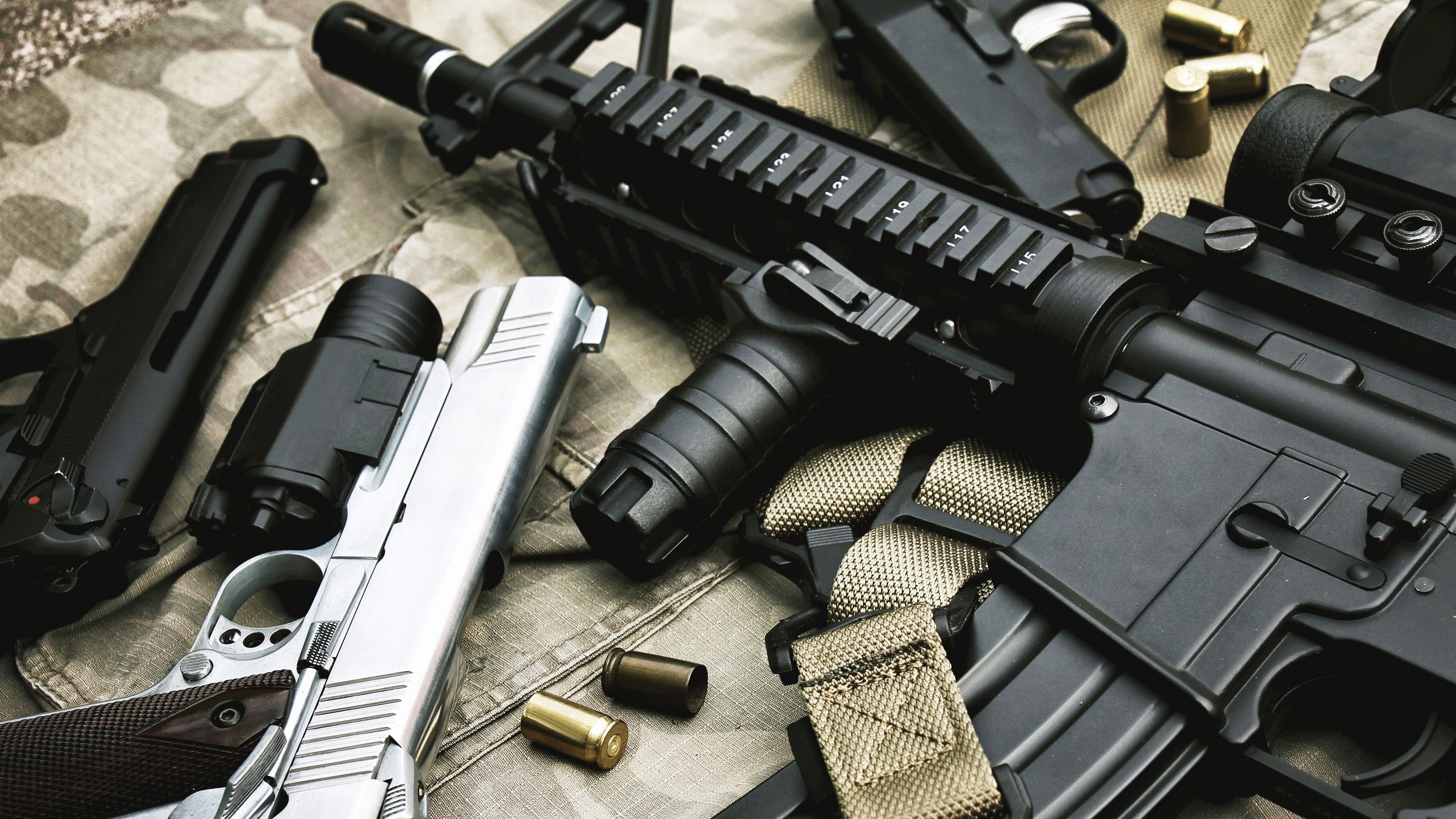
Representative image showing weapons
Credit: iStock Photo
By Mihir Sharma
South Korea has long punched above its weight as an industrial power. Facing a constant existential threat has strengthened its resilience, self-reliance, and competitiveness.
Until recently, the Korean defense industry had not quite matched the export performance of the rest of the country’s economy. That’s changing: South Korea now ranks among the world’s top 10 arms exporters, notching $14 billion in exports last year to 12 countries, up from just four in 2022.
Korean exports, which are very competitively priced, are filling an obvious gap in the market. Some of its biggest customers are in Eastern Europe— Poland, for example. Countries that cannot afford high-end weapons from the US or Western Europe are looking for alternatives that don’t come with the strings attached to arms from Russia, China, or Turkey.
But South Korea has not yet maximized its biggest potential market, which is on its doorstep in the Indo-Pacific. Countries from India to the Philippines, which confront real military threats and stretched defense budgets, are looking for alternatives. To win them over, Seoul needs to focus as much on geopolitics as on finance and technology.
Commercial South Korean manufacturers already excel in selling to South and Southeast Asia. Seoul is trying to expand its support to defense exporters. When a multibillion-dollar deal with Poland struggled to achieve financial closure, legislators increased the export-import bank’s capitalization to match the scale of the transaction. A Polish delegation visited Seoul this week to try and hammer out the details.
Cost is only one consideration for countries entering into long-term defense arrangements, however. Trust is also an issue. Are your relationships with your arms suppliers strong enough to withstand a shift in geopolitical winds? Will those countries move heaven and earth to make maintenance and resupply available in a crisis?
Developing a stronger military-to-military relationship is also key. India has long bought arms from Russia, for example. Nobody else so far has been willing to offer the particular combination of technology transfer and cost that the Russians did. If New Delhi is to scale down its dependence on Moscow, it is likely to be because it feels that it should buy platforms used by militaries with whom it may need to conduct joint operations.
Finally, there is the question of reciprocity. A country that buys warplanes from another, for example, often expects some benefit to the larger bilateral economic relationship. If taxpayer money from one country keeps assembly lines open in another, the politicians spending that cash naturally want something in return.
For South Korea to expand its footprint in the region, it will have to work harder to build up this kind of trust. Consider Indonesia, its biggest Southeast Asian customer. The Indonesians understandably grumbled after a German submarine refitted in South Korea mysteriously sank in 2021, killing 53 sailors.
South Korea’s KF-21 fighter is another flashpoint: The Indonesians think Seoul is being stingy with technology transfer, while the Koreans worry that payments are overdue and complain of “attempts by Indonesian engineers to leak confidential data.”
South Korean defense planners may believe that treating arms exports as commercial rather than strategic decisions will give buyers confidence that they come with few strings attached. But the negatives of this approach might outweigh the positives. Few nations will invest billions into either making or buying a weapon if they fear that geopolitics might get in the way a decade from now. Building a long-term arms trade around a strategic relationship rather than a particular price point makes better commercial sense.
Seoul has traditionally been somewhat hesitant about more assertive diplomacy in the Indo-Pacific, although its current president has taken a few halting steps forward. Trust is built through institutions— and relations with countries such as India and Indonesia will require institutionalization.
South Korean officials will need to master an entirely new grammar of bilateral engagement: regular ministerial-level summit meetings, security-focused working groups, discussions about economic security and supply chains, more academic exchanges. They will need to offer as much as they take— and to do that, they will need to better understand what their potential partners want.
When it comes to defense, South Korea can no longer rely on its giant companies to open new markets for their products, as it has for decades. Korean cars and appliances have conquered Asia; Brand Korea has built its soft power across the region. Still, Korea’s ambitions to be a “pivotal state” will require a bit more effort.